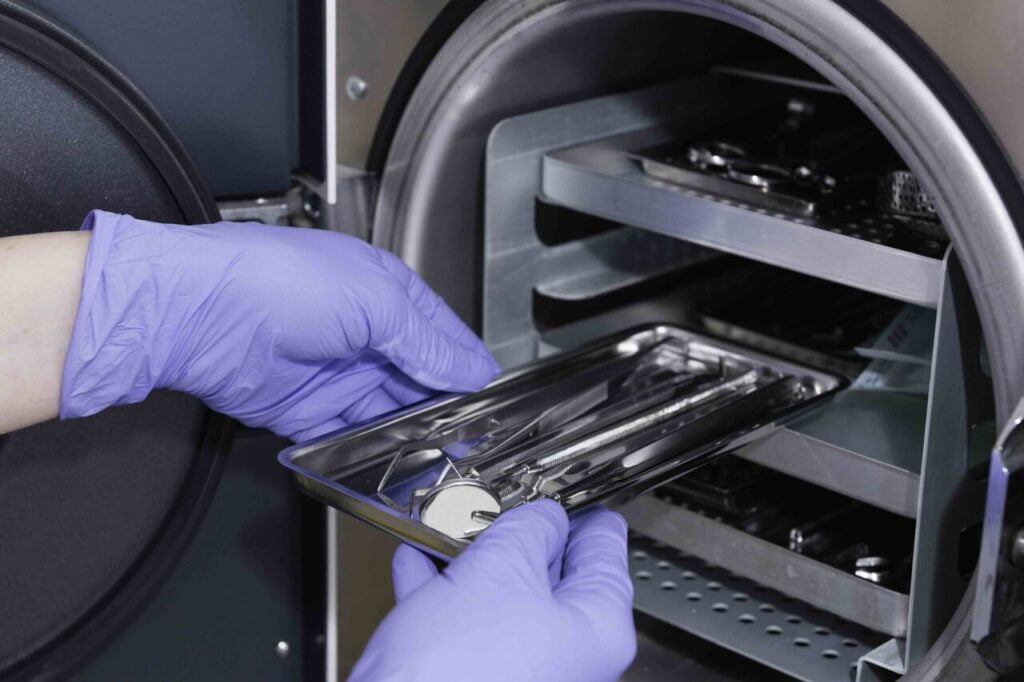 Some industries rely heavily on having flawless sanitation processes. Improperly sterilized equipment can lead to health risks, ineffective experiments, and more. If you work in a field that requires sterile equipment, an autoclave would be a great addition to your cleaning procedures.
Some industries rely heavily on having flawless sanitation processes. Improperly sterilized equipment can lead to health risks, ineffective experiments, and more. If you work in a field that requires sterile equipment, an autoclave would be a great addition to your cleaning procedures.
What Is Autoclave Sterilization?
Autoclave sterilizationis one of the most effective methods of sterilization that there is. Sterilization is achieved through prolonged exposure to high steam temperature and pressure. An autoclave can kill microorganisms, spores, bacteria, and viruses.
How Large Are Autoclaves?
Autoclave units come in a tremendous variety of sizes to fit your needs. The smallest autoclaves can fit on a tabletop. The compact size makes them perfect for use in small businesses and labs alike. Industrial autoclaves are substantially larger. Boeing has one of the largest autoclaves which measures 30 meters long with a diameter of 12 meters.
How Long Does Sterilization Take?
The length of time required is dependant on a few factors. For sterilization to occur, steam must fully penetrate the item. That means that wrapped items, larger volumes, and certain materials take longer. On average, an autoclave cycle is an hour to an hour and a half long. Approximately 30 minutes of that time is the sterilization portion. The remaining time is required for the steam to heat up to around 121 degrees Celsius and cool back down.
What Can You Put in Autoclaves?
Only acceptable materials can safely be placed into an autoclave. Certain liquids and solids are generally safe to sterilize. With some exceptions, glass, latex, paper, polypropylene, vinyl, and metal are alright. Glass should be pyrex or approved by the manufacturer. Latex, vinyl, and paper should be autoclaved in bags to prevent melting and combustion.
What Cannot Be Autoclaved?
It is dangerous to try to sanitize some materials in an autoclave. Radioactive, flammable, combustible, corrosive, carcinogenic, or volatile materials should not be placed into an autoclave. Liquids that do not fall into those categories may be autoclaved as long as their containers are not sealed. Be observant of size as well. A material that fails to fit into the autoclave without touching the sides should not be put through a cycle.
Who Uses Autoclaves?
Because autoclaves can sanitize so many materials, they are used in many industries. The most common use is in the medical field. Doctors, dentists, research labs, and more frequently use autoclaving to sanitize reusable materials. The beauty industry is another consumer of autoclaves. Sterilization is used by beauticians, barbers, nail salons, and even tattoo parlors.
Can Anyone Purchase an Autoclave?
Autoclaves are available for anyone to purchase. New and refurbished units are available in many stores and across the internet. There are extreme differences in pricing depending on size and quality. For a small, high-quality unit, you can expect to spend $1000 to $2000.
Are There Risks?
There are risks to handling a unit with such high pressures and temperatures. Burns can result from the steam, items that were sanitized, and the unit itself. Similar to pressure cookers, there is also a risk of explosion. That risk is higher if you use improper materials or procedures. Heating incorrect materials can release unhealthy fumes as well.
How Do You Stay Safe?
Accidents do happen, but following safety procedures reduces the number and severity. Everyone who uses an autoclave should be educated on how they function, and the operating manual should always be accessible. Users should wear protective gear. It is important to have autoclaves inspected regularly to prevent mechanical failure.
Autoclave sterilization is extremely effective at sanitizing many materials. As long as proper procedures are followed, autoclaves are a smart, safe addition to any industry that needs sterile equipment.







